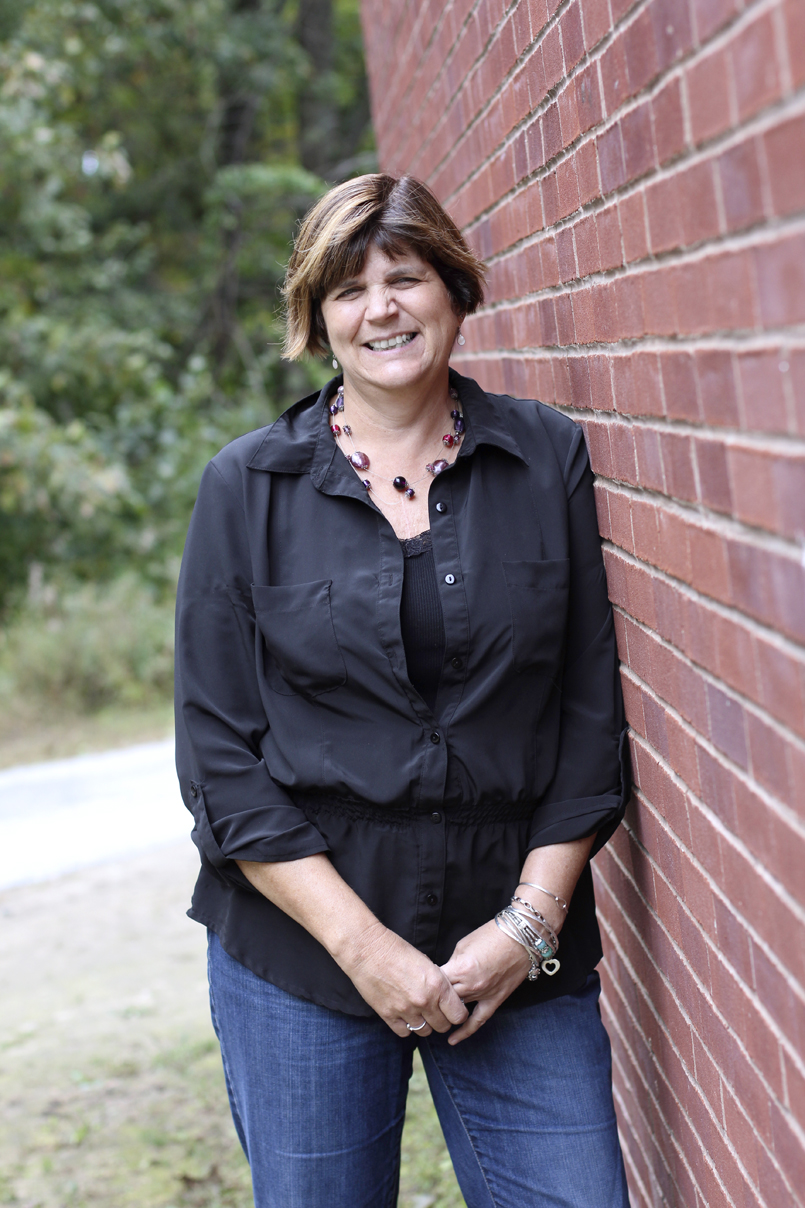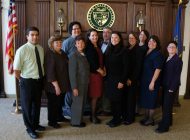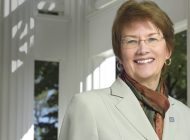by Barbra Alan, photos by Kristen Reimold
Barbara O’Brien ’04G, ’08CAGS, ’12 EdD, will never forget her class’s field trip to a museum. One of her second grade students, a bright little boy who struggled with verbal communication, was trying to ask the docent a question. “Each time he paused to gather his thoughts, the docent would interrupt him,” O’Brien recalls. That’s when another student respectfully spoke up for his classmate. “He said [to the docent], ‘If you could please wait, what he’s going to say will be wonderful. Please wait.” The docent did wait, and what the child had to say, O’Brien recalls with a smile, “was brilliant! He just needed to take some time to think, rehearse, and then he could do it. The docent didn’t know that, but my students did, because they had been with this student for two years.”
This is more than just a nice story about one student standing up for another, it’s a testament to the benefits of the inclusive classroom: a classroom that includes students of all abilities. O’Brien, who has been teaching for 31 years, has long been a champion of including students with special needs in the classroom. “When I started teaching, children [with special needs] came into my classroom, stayed for a lesson, then left, returned for art, then left, came back for lunch, then left … and I just didn’t know them,” O’Brien laments, adding, “and my other students didn’t even know their names!”
 Helping Each Other
Helping Each Other
Believing that disabled students should have the opportunity to learn and grow alongside their non-disabled peers, O’Brien was able to convince her school to allow students with special needs into her classroom full-time. Throughout most of her teaching career, she has taught students with a variety of disabilities—emotional, physical, and academic—in an inclusive classroom with great success. “We work together, do projects together, and we help each other,” O’Brien says of her classroom, which was featured in the 2007 documentary Including Samuel, about one family’s efforts to include their son Samuel, who has cerebral palsy, in everyday life. Samuel was O’Brien’s student for kindergarten through second grade. “His dad [photojournalist and filmmaker Dan Habib] came into my classroom and filmed over a period of three years,” she says. “My classroom became part of this amazing film about inclusion.”
O’Brien is so passionate about inclusion that she takes every opportunity to share her experiences with other educators through writing articles for journals and newsletters and presenting at conferences. She has also researched and written extensively about inclusion for her master’s degree, CAGS, and doctoral degree—all of which she earned at Plymouth State.
A member of PSU’s first doctoral cohort, O’Brien began her doctoral study in July 2009. Even then, when she thought about her dissertation, “I knew it was going to be about inclusion,” she says. “It was something I wanted to write about and learn more about.”
O’Brien’s dissertation, titled “Through Our Eyes: What Effect does Participation in an Inclusive Primary Grade Classroom Community have on Typical Students?” looks at inclusion from the “typical” or non-disabled student’s stand-point. While years of teaching experience told her that children with special needs do well with inclusion, O’Brien recalls wondering, “What about the typical children? What did they think about inclusion? So that became my focus: to talk to the typical kids about inclusion in the classroom.”
The Classroom Community
In spring 2011 O’Brien interviewed 20 typical students in grades one through five, all of whom were at one time her students. The interviews were conducted one-on-one, in a quiet space, and were followed by a brief multiple-choice survey. Students noted that their experience in an inclusive classroom allowed them to make friends with students they may not have had a chance to meet and taught them to be patient with others. But most of all, O’Brien says, inclusion taught the students that it’s okay to be different, and that “inclusion means everyone learning together in a classroom community. Without a classroom community, you don’t have inclusion, and without inclusion, you don’t have a classroom community.”
Drawing on her student interviews, the research she had conducted for her earlier degrees, and the teaching journals she kept over the years, O’Brien completed her dissertation and earned her doctorate in May 2012. “I wanted to create a piece of literature that people would want to pick up and read, and I did,” she asserts. “It’s filled with stories, the children’s stories and my stories, and to me, stories are a basic part of education.”

O'Brien once considered a career as a social worker, but a stint teaching kindergarten as an undergraduate awakened her passion for teaching.
Now she plans on sharing those stories with a wider audience. “As teachers, we’re being pushed on the academics side, but we can’t lose sight of the importance of community-building in the classroom,” she says. “It doesn’t begin and end in the first few weeks of school. It continues throughout the year: the students change, the dynamic changes. I’ve had students go through illness, divorce, losing parents … and we’ve come together as a community, to support each other. Community first, then work on the academics.”
In addition to promoting the importance of inclusion and classroom community, O’Brien also plans on earning her certification in special education and teaching graduate-level courses at PSU. “I want to keep going,” she says. “This degree has inspired me to learn and do more.”
Tags: Barbara O'Brien Beaver Meadow School EdD inclusion inclusive











